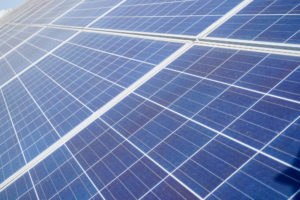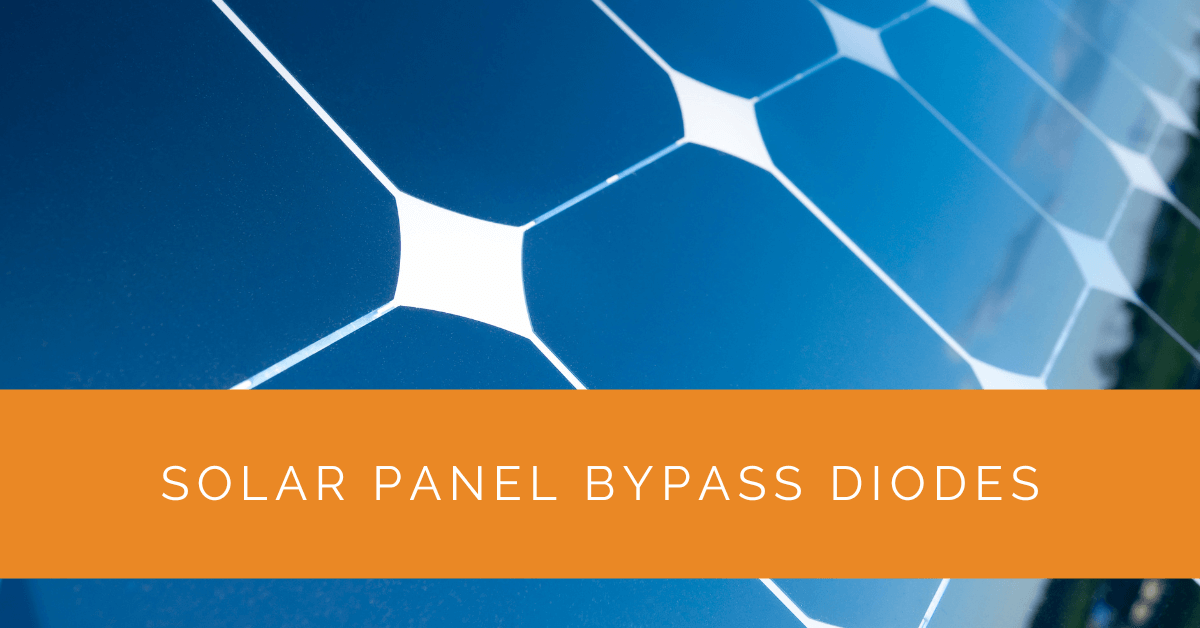Solar panels have become an indispensable renewable energy source in today’s world. They harness the power of sunlight and convert it into electricity, making them an eco-friendly and cost-effective choice for powering homes and businesses. However, solar panels are not without their challenges, and shading is one of the most common issues they face. When even a small portion of a solar panel is shaded, it can significantly reduce its efficiency and energy output. This is where solar panel bypass diodes come into play.
Contents
- 1 Key Takeaways
- 2 Solar Panels and Solar Cells
- 3 The Challenge of Shading
- 4 The Blocking Diode Effect
- 5 Enter Bypass Diodes
- 6 Understanding Bypass Diode Operation
- 7 Benefits of Bypass Diodes
- 8 Case Study: Enhancing Solar Panel Efficiency with Bypass Diodes
- 9 Expert Insights From Our Solar Panel Installers About Understanding Solar Panel Bypass Diodes
- 10 Experience Solar Excellence with Us!
- 11 Conclusion
Key Takeaways
- Bypass diodes are essential components in solar panels that help maintain current flow even when some cells are shaded, preventing a drop in energy output.
- These diodes prevent hotspots, maintain voltage, increase efficiency, and extend the lifespan of solar panels by redirecting current around shaded areas.
- Understanding the role of bypass diodes is crucial for optimizing solar panel performance and ensuring reliable solar power generation.
Solar Panels and Solar Cells
To understand the role of bypass diodes, let’s start with the basics. Solar panels comprise photovoltaic (PV) cells, also known as solar cells. These cells are responsible for converting sunlight into electrical energy. When sunlight strikes a solar cell, it excites electrons, creating an electrical current that flows through it. This current is then collected and used to power various devices.
The Challenge of Shading
While solar panels are designed to capture sunlight effectively, they can face challenges like shading. Shading occurs when an object, such as a tree or building, casts a shadow on a portion of the solar panel’s surface. When this happens, the shaded cells produce less electricity than the unshaded cells, creating an imbalance in the electrical output. This imbalance can lead to a phenomenon known as the “blocking diode effect.”
The Blocking Diode Effect
Blocking diodes, also known as blocking diodes or bypass diodes, are essential components in solar panel systems. They are semiconductors that allow electrical current to flow in one direction while blocking it in the reverse direction. In a solar panel system, blocking diodes are typically connected in parallel to each solar cell or cell group within the panel.
When shading occurs, the shaded cells produce less electricity, causing a voltage drop. This voltage drop can be problematic because solar cells within a panel are connected in series. In a series connection, the current must be the same in all cells. When one cell produces less current due to shading, it restricts the current flow for the entire string of cells, reducing the overall energy output of the solar panel.
Enter Bypass Diodes
This is where bypass diodes come to the rescue. Bypass diodes are strategically placed within the solar panel junction box. When a cell or group of cells is shaded, the voltage across them drops significantly. This voltage drop triggers the bypass diode to become forward-biased, allowing electrical current to flow through it. By doing so, the bypass diode effectively bypasses the shaded portion of the panel, allowing the unshaded cells to continue generating electricity without being affected by the shading.

Understanding Bypass Diode Operation
It’s important to grasp their operation within the solar panel circuit to comprehend how bypass diodes work. When all cells are exposed to sunlight and functioning optimally, bypass diodes remain non-conductive, essentially doing nothing. However, when shading occurs, and the voltage across the shaded cells drops, the bypass diode begins to conduct. This creates a parallel path for the electrical current to flow, bypassing the shaded cells. As a result, the overall current flow in the circuit is maintained, preventing a significant drop in energy production.
Benefits of Bypass Diodes
Now that we’ve explored how bypass diodes function, let’s delve into the benefits they offer:
- Preventing Hotspots: Without bypass diodes, shaded cells can become “hotspots” as they dissipate the electrical energy they receive as heat. This can lead to cell damage or even fires in extreme cases. Bypass diodes prevent hotspots by diverting excess current away from shaded cells.
- Maintaining Voltage: Bypass diodes help maintain a consistent voltage output from the solar panel, ensuring the solar inverter receives a stable voltage for efficient energy conversion.
- Increasing Efficiency: By allowing the unshaded cells to continue producing electricity, bypass diodes boost the overall efficiency of the solar panel, especially in situations where partial shading is unavoidable.
- Preventing Short Circuits: Shading could lead to short circuits within the solar panel without bypass diodes. Bypass diodes prevent this by redirecting current around the shaded area.
- Enhancing Panel Lifespan: By preventing overloading and hotspots, bypass diodes contribute to a longer lifespan for solar panels, ensuring they continue to generate clean energy for years.
Case Study: Enhancing Solar Panel Efficiency with Bypass Diodes
Background
A residential client sought to install a solar PV system on their property, which had several trees potentially causing partial shading on the roof. The client was concerned about how this shading might impact the efficiency and longevity of their solar panels.
Project Overview
Our objective was to design and install a solar panel system that would maintain high efficiency despite potential shading. We decided to incorporate bypass diodes to mitigate the effects of shading and ensure consistent energy output.
Implementation
- System Design: We conducted a detailed site assessment to identify the areas likely to be affected by shading throughout the day. This information was crucial for optimizing the placement of solar panels and the integration of bypass diodes.
- Panel Selection: We selected high-quality solar panels equipped with pre-installed bypass diodes. These panels were chosen for their efficiency and reliability, ensuring they could handle partial shading effectively.
- Installation: During installation, our team ensured that the panels were oriented to maximize sunlight exposure and minimize shading impact. The bypass diodes were strategically placed to bypass shaded cells, maintaining the overall system performance.
- Testing and Calibration: After installation, we performed comprehensive testing to ensure the bypass diodes functioned correctly. This involved simulating shading conditions to observe the diodes’ effectiveness in maintaining current flow and preventing hotspots.
Results
- Increased Efficiency: The inclusion of bypass diodes resulted in a significant improvement in the system’s efficiency. The panels continued to produce electricity even when parts were shaded, leading to a higher overall energy yield.
- Prevented Hotspots: By effectively redirecting current around shaded areas, the bypass diodes prevented hotspots, which could have caused long-term damage to the solar cells.
- Stable Voltage Output: The system maintained a stable voltage output, ensuring the solar inverter operated efficiently. This stability was crucial for the reliability of the entire solar PV system.
- Extended Lifespan: The prevention of hotspots and overloading contributed to a longer lifespan for the solar panels. The client was pleased with the system’s performance and the anticipated longevity of their investment.
Summary
This case study demonstrates the critical role of bypass diodes in enhancing the efficiency and reliability of solar panel systems, particularly in environments prone to partial shading. By integrating bypass diodes, we were able to deliver a solar PV system that maintained high performance, prevented potential damage, and ensured a stable energy output. This project highlights the importance of advanced technologies in overcoming common challenges in solar energy installations.
Expert Insights From Our Solar Panel Installers About Understanding Solar Panel Bypass Diodes
Bypass diodes are indispensable for maintaining the efficiency of solar panels, especially in partially shaded conditions. They ensure that shading on one part of the panel doesn’t compromise the entire system’s performance.
Senior Solar Technician
Preventing hotspots is critical for the longevity of solar panels. Bypass diodes play a vital role in this by redirecting current and protecting the cells from overheating and potential damage.
Lead Solar Engineer
Understanding the role of bypass diodes can help users appreciate the complexity and resilience of modern solar panels, ensuring reliable energy production even under less-than-ideal conditions.
Solar Installation Specialist
Experience Solar Excellence with Us!
Trust in Solar Panels Network USA, where our seasoned experts deliver top-quality solar solutions for homes and businesses nationwide. With a legacy of countless successful installations and a commitment to sustainable energy, we’re your reliable partner in the solar journey. Ready for a brighter, eco-friendly future? Call us now at (855) 427-0058 and harness the power of the sun!
Conclusion
Solar panel bypass diodes play a crucial role in optimizing the performance of solar panels, particularly in situations involving shading. Understanding how they function and their benefits is essential for anyone considering solar power systems. Bypass diodes effectively ensure uninterrupted current flows, preventing losses due to shading and other potential issues. As solar power continues to gain popularity, bypass diodes will remain integral in harnessing clean and efficient energy from the sun.
About the Author
Solar Panels Network USA stands at the forefront of solar energy solutions, driven by a team of seasoned solar engineers and energy consultants. With over decades of experience in delivering high-quality solar installations and maintenance, we are committed to promoting sustainable energy through customer-centric, tailored solutions. Our articles reflect this commitment, crafted collaboratively by experts to provide accurate, up-to-date insights into solar technology, ensuring our readers are well-informed and empowered in their solar energy decisions.

